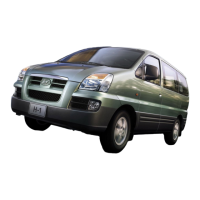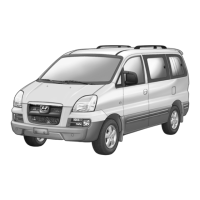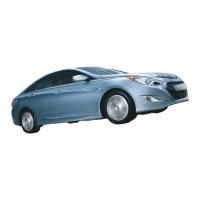
Do you have a question about the Hyundai H-1 i800 2016 and is the answer not in the manual?
| Brand | Hyundai |
|---|---|
| Model | H-1 i800 2016 |
| Category | Automobile |
| Language | English |
Guide on how to navigate and understand the owner's manual and its warnings.
Information on recommended and prohibited fuel types for the vehicle's engine.
Guidelines for operating the vehicle safely, considering its design characteristics.
Precautions for the initial period of vehicle use to ensure optimal performance.
Identification of interior components and controls within the vehicle's cabin.
Identification of gauges, indicators, and controls on the vehicle's instrument panel.
Identification of major components located under the vehicle's hood.
Details on adjusting and using front and rear seats for occupant safety and comfort.
Comprehensive guide on seat belt usage, types, and safety precautions.
Information on selecting, installing, and using child safety seats for maximum protection.
Explanation of the air bag system, its operation, and critical safety warnings.
Information on key identification, operation, and security features.
Operation and precautions for the remote keyless entry system.
Description of the theft-alarm system's stages and operational guidelines.
Procedures for operating vehicle door locks from inside and outside.
Essential checks and procedures to perform before starting to drive the vehicle.
Explanation of the ignition switch positions and their functions.
Detailed steps for starting petrol and diesel engines, including safety warnings.
Operation guide for the manual transmission, including shifting and cautions.
Information on using hazard warning flashers for signaling emergencies.
Procedures for handling emergencies like engine stalls or flat tires.
Troubleshooting steps for when the engine fails to crank or start.
Instructions and safety precautions for jump-starting the vehicle's battery.
Identification of components in the engine bay for diesel and petrol engines.
Overview of maintenance procedures and owner responsibilities.
Checks and inspections for regular owner maintenance of the vehicle.
Guidelines for normal and severe usage maintenance schedules.
Location and purpose of the Vehicle Identification Number (VIN).
Information on the vehicle certification label and its VIN.
Details on tyre specifications and recommended inflation pressures.
Location of the engine number stamped on the engine block.
Vehicle dimensions including length, width, height, tread, and wheelbase.
List of exterior and interior light bulb wattages for replacement.
Information on tyre sizes, wheel sizes, and inflation pressures.
Details on tyre load index and speed symbol ratings.












